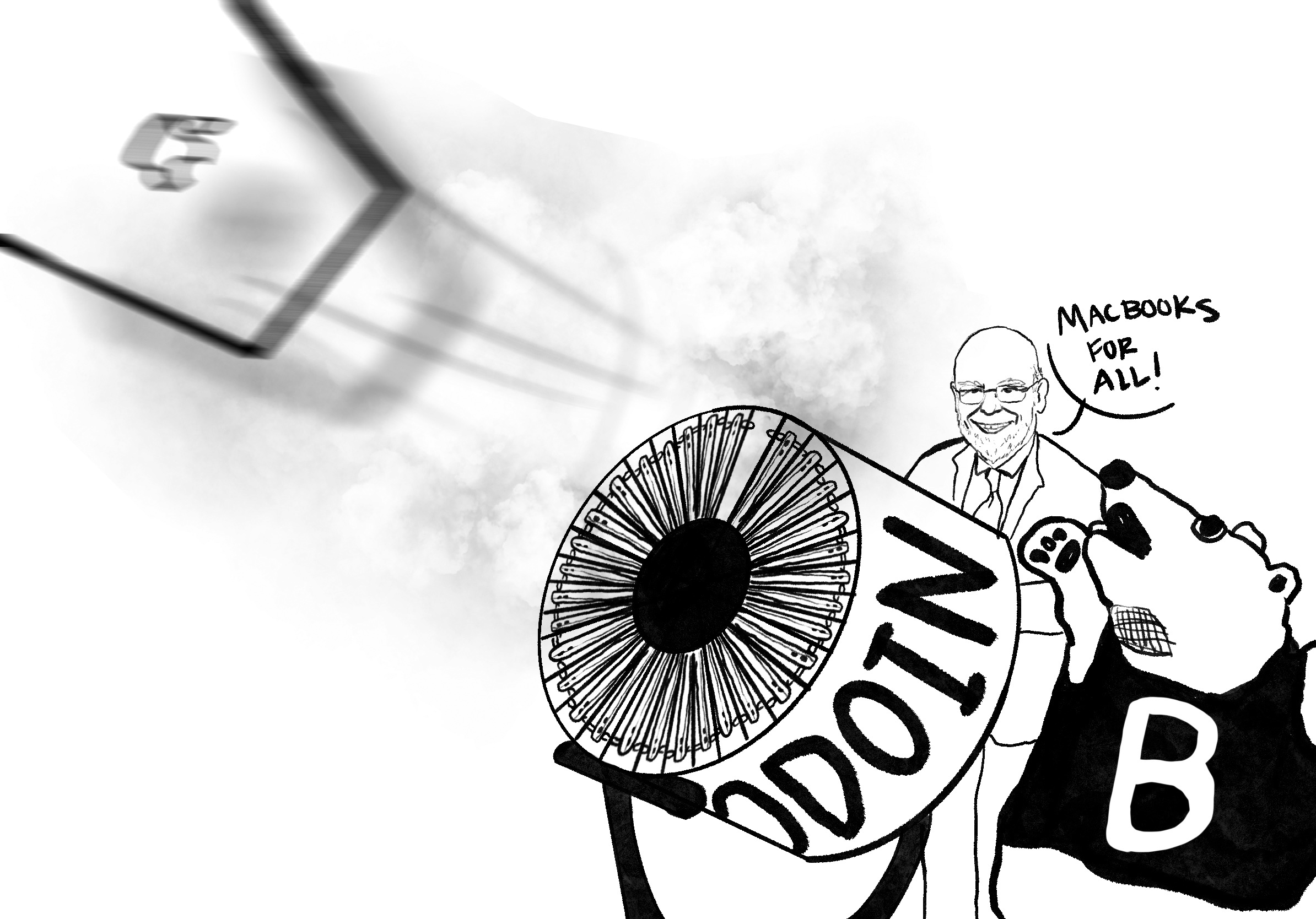Is it really equity, Clayton?
March 4, 2022
 This
piece represents the opinion of the author
.
This
piece represents the opinion of the author
.
 Kyra Tan
Kyra TanWhen I first heard about the new MacBook initiative, I was thrilled. As a member of the first group of students to receive and benefit from the school-wide iPad initiative, it was heartwarming to hear that future Polar Bears would have access to the same, and more, technology they needed to succeed in their education.
This was until I read that these very expensive devices would be given to “every single Bowdoin student,” and, according to President Rose, that it would be in efforts to make Bowdoin a more “equitable” place.
As one of the 48 percent of Bowdoin students that receive some form of need-based financial aid and as someone with the privilege of a middle-class upbringing, one of the biggest adjustments to life at Bowdoin was the student body’s enormous wealth gap. That financial aid statistic is often touted to depict Bowdoin as a bastion of socioeconomic diversity in higher education. Sure, in comparison to other schools, that statistic is potentially higher; I wouldn’t be able to (pretend to) afford Bowdoin without its generous financial aid policy. However, it’s telling of a larger, more pressing truth: 52 percent of Bowdoin students can afford to spend roughly $75,000 each year completely out of pocket. And the 48 percent, like me, on some form of financial aid? “Some form” of financial aid could mean anything from a full ride to a stipend for books. Not everyone who receives “some form” of financial aid needs a new MacBook.
The MacBook initiative is actually equality, not equity. Throwing laptops at economically privileged people and calling it “equity” doesn’t actually make Bowdoin a more equitable place. While there is more socioeconomic diversity at Bowdoin now than in its sordid past, let’s not pretend that the elitism, privilege and exclusion that it was founded on isn’t here anymore.
Throwing money at an issue and not addressing it more profoundly is not a solution; it’s avoiding one.
If Bowdoin was interested in doing the work of equity, it could direct resources to ensure each student was receiving the resources they do need: people without the means to acquire or fix a laptop would receive the support to do so, and the rest of the money allocated toward the laptop initiative could go toward other pursuits: paying its staff more or hiring more counselors, for instance.
If Bowdoin truly wants to help its disadvantaged students—whether it be due to their race, gender, sexuality, class, religion, nation of origin, immigration status, etc.—it should put its money where its mouth is before it’s spent, and listen to what those students are saying.
Sophie Wilson is a member of the Class of 2022.
Comments
Before submitting a comment, please review our comment policy. Some key points from the policy:
- No hate speech, profanity, disrespectful or threatening comments.
- No personal attacks on reporters.
- Comments must be under 200 words.
- You are strongly encouraged to use a real name or identifier ("Class of '92").
- Any comments made with an email address that does not belong to you will get removed.

We should consider adjusting GPA for income. After all, having rich parents is a massive privilege which most people don’t have.